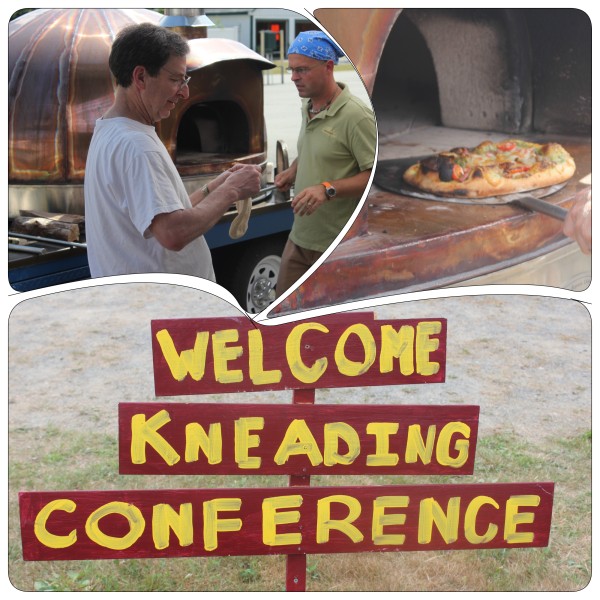The 6th Annual Kneading Conference was held this past weekend in Skowhegan, Maine. It’s not the northern most town in Maine, but it’s up there. An 8 hour drive from New York City, and worth every minute.
The conference is devoted to a few key topics including:
- Creating artisan bread
- Investigating different flour types and baking techniques
- Using wood fired ovens, both for personal and professional use
- Sharing ideas on sustainability
In the top picture you see Mitch and Ciril from Johnson and Wales in Providence giving their wood oven pizza class. Ciril Hitz is the director of the baking program at Johnson and Wales. Ciril is absolutely brilliant on multiple fronts. He’s the baker we would all love to be. More importantly, he’s a teacher who you can understand. His two-hour class truly flies by. And you are riveted by every word. You can see his website, www.breadhitz.com for tools, tips, books, and videos. Watch him once and you will be hooked.
We learned some important things this time that any wood oven user, like us, needs to consider. We make pizza. Really good pizza. We try to emulate the style we saw in Naples: heat the floor of the oven to at least 800 degrees F, and cook for a short time. At that temperature, a pizza is done in 80-100 seconds. So, once the pizza is in, you wait 20 seconds, then begin using the peel to dip in and rotate the pizza for even cooking. It’s work, if you have never tried it. Maneuvering the peel, that metal or wood flat surface that the pizza is first put in with, is not easy. The handle is long, the oven is hot, and the oven opening can truly limit your flexibility.
Ciril suggested a different technique. Have the surface only at 650 degrees and cook the pizza for 3-5 minutes. That lower temperature is much easier to reach, and to sustain, in a wood oven. [Temperature management is a big topic addressed each year at the Kneading Conference.] And that longer cooking time means you are less harried in moving the pizza around inside the oven.
The pizza dough itself will cook differently at the lower temperature, and it will taste differently. Which is better? I can’t begin to say. It’s pizza! The best part of the pizza experience is the variety of tastes and textures that are available to you.
On a serious note, the conference addressed sustainability and included some remarkable facts. That last forkful of food that you just chewed? On average, the food traveled 1,500 miles to get to your mouth. For every 1 calorie of nutrition in your mouth there, 11 calories of energy had to be expended in growth, harvesting, production, packaging and transportation. It’s very simple. Local, organic foods are not only nutritionally better for you, they are vastly more energy efficient. It is not being snobby to want local or to patronize that farmers market. It’s being very careful and very responsible.

